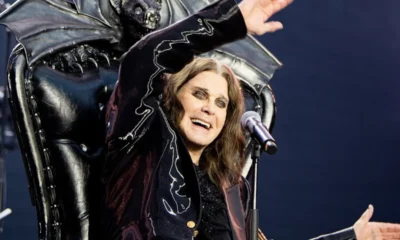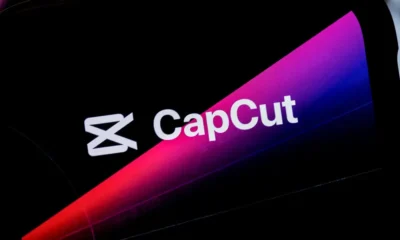Apple
Apple’s Secret AI Tags Are Quietly Changing How Your Favorite Apps Get Found
Developers get an early taste of Apple’s new AI-powered discoverability tool in iOS 26 beta, but what does it mean for your App Store search results?

Apple is once again shaking up the app ecosystem, and this time, it’s doing it quietly — with Artificial Intelligence working behind the scenes. According to recent findings, the tech giant’s much-anticipated AI-generated tags have gone live for developers testing the iOS 26 beta, though everyday App Store users won’t see them just yet.
At its recent Worldwide Developer Conference (WWDC 25), the Cupertino-based innovator confirmed what industry insiders had long speculated: Apple wants to make it easier for users to find exactly the apps they need, and AI is the secret sauce. Traditionally, an app’s name, subtitle, and keyword list were the only factors feeding the store’s search algorithm. Now, the game is changing.
App analysts from Appfigures revealed that screenshots — once just a visual aid — are now treasure troves of searchable metadata. The twist? Instead of simple Optical Character Recognition (OCR), Apple’s next-level AI scans an app’s entire metadata ecosystem — from descriptions and categories to screenshots — to pull out useful bits that define what an app truly does.
Developers, however, need not panic. According to the tech titan, this AI-driven tagging system won’t turn into a wild west of automated keywords. Instead, developers maintain the final say in which tags stay attached to their products, with human reviewers stepping in to verify accuracy before any tag goes public.
For millions of app makers worldwide, this subtle yet significant upgrade promises both opportunities and headaches. Getting discovered might soon depend less on stuffing awkward keywords into an app’s description and more on how clear and authentic an app’s visual and written assets are. In essence, Apple’s latest AI effort aims to reward quality content over cheap tricks.
For everyday users, this means smoother searches and better app recommendations — even if you never know these AI tags exist. But for developers, it’s time to brush up on what tags mean for their ranking strategy. While the feature remains confined to the developer beta, experts say it’s only a matter of time before these intelligent tags power the public App Store experience globally.
So next time you effortlessly stumble upon the perfect app, remember: a little hidden AI magic — and a lot of human review — made it possible.
Apple
Apple’s Jeff Williams to Retire: The Man Who Could Have Replaced Tim Cook Passes the Torch
In a monumental shift at Apple, COO Jeff Williams—once seen as Tim Cook’s heir—announces his retirement. His successor? Longtime Apple veteran Sabih Khan, who now faces supply chain hurdles, AI disruption, and global regulation.

In a year already filled with seismic shifts for Apple Inc., the company is preparing to say goodbye to one of its most trusted hands: Jeff Williams, Apple’s Chief Operating Officer, and widely regarded as Tim Cook’s right-hand man, will retire later this year.
Williams, 62, has been with the company since 1998 and became COO in 2015, playing a central role in Apple’s global supply chain, health initiatives, and engineering teams—including those behind the Apple Watch and AppleCare services. Known for his calm demeanor and operational genius, he was once seen as Cook’s likely successor. But with only two years separating their ages, that possibility faded. Now, Apple enters a new era.
The New Guard: Sabih Khan Steps In
Replacing Williams is Sabih Khan, a 30-year Apple veteran who has quietly orchestrated many of the company’s most complex global operations. Since joining Apple’s executive team in 2019, Khan has overseen procurement, manufacturing, and supplier relationships—areas increasingly critical as Apple shifts iPhone production from China to India.
Khan is described as “methodical,” and “cut from the Tim Cook cloth,” by former colleagues. But unlike Williams, who was often on stage during Apple keynotes presenting health features and Apple Watches, Khan has kept a low public profile. That’s about to change.
“Jeff was a little more product-minded; Sabih is a brilliant operator,” said former Apple engineer Matthew Moore. “The ops team won’t miss a beat. The question is who will handle the rest of Jeff’s wide-ranging responsibilities.”
Jeff Williams: The Quiet Architect of Apple’s Machine
Before joining Apple, Williams worked at IBM in the 1980s. At Apple, he quietly helped build what many consider one of the most sophisticated global supply chains in tech history. He scaled operations to support hundreds of millions of devices per year, sourced from thousands of suppliers, and steered Apple’s health tech evolution—turning the Apple Watch into a medical-grade device.
Former colleagues paint him as a deeply respected, behind-the-scenes leader.
“Time takes its toll, and it’s almost as if the band is dissolving,” said Tony Blevins, Apple’s former VP of operations. “Jeff will be sorely missed.”
A Leadership Exodus at a Crucial Time
Williams’ exit is just the latest in a wave of retirements from Apple’s senior leadership. Luca Maestri, the company’s longtime CFO, has stepped into a smaller role ahead of his own departure. Dan Riccio, former hardware head, left in 2024. And legendary design chief Jony Ive stepped away back in 2019.
Now, all eyes are on John Ternus, Apple’s SVP of Hardware Engineering, who Bloomberg reports is the leading internal candidate to one day replace Tim Cook.
With AI competition heating up, regulatory pressure mounting, and hardware innovation slowing, Apple is entering a transformative moment—without some of its most battle-tested leaders.
What’s Next for Apple’s Operations?
Khan is stepping into the COO role amid global turmoil. Apple is:
- Facing tariffs and regulatory heat in both the U.S. and EU
- Dealing with AI leadership gaps (its top AI exec was recently poached by Meta)
- Watching new AI-first devices threaten the long-term dominance of the iPhone, Mac, and iPad
Williams’ remaining responsibilities—including Apple’s health initiatives and Watch engineering—have yet to be reassigned. But insiders expect executives like Craig Federighi and John Ternus to absorb key areas, as Apple reorganizes internally.
“Jeff’s true legacy can be seen in the amazing team he’s created,” Tim Cook said in a prepared statement. “While he’ll be greatly missed, he leaves the work of the future in incredible hands.”
Personality
Inside Elon Musk’s Secretive Family Life with 14 Kids and 4 Women You Didn’t Know About
From twins with Shivon Zilis to his famously named son with Grimes — here’s a look at the Tesla CEO’s growing family and the women he’s raising them with

Billionaire entrepreneur Elon Musk is known for revolutionizing industries with Tesla, SpaceX, and Neuralink — but off the launchpad, his growing family has sparked just as much public intrigue. With 14 children across relationships with four different women, Musk’s personal life is as headline-grabbing as his business ventures.
The tech tycoon’s family journey began with Canadian author Justine Musk, his college sweetheart turned first wife. The couple had six children together — tragically losing their first son, Nevada, to SIDS in 2002. They later welcomed twins, Griffin and Vivian (born 2004), followed by triplets, Kai, Saxon, and Damian (born 2006). However, Vivian, now a transgender woman, has legally changed her name and distanced herself from her father, making rare headlines.
After his divorce from Justine, Musk entered an on-again, off-again relationship with musician Grimes (real name Claire Boucher). In 2020, the duo famously introduced the world to their uniquely named son, X Æ A-12, later updated to X AE A-Xii for legal reasons. In 2022, it was revealed they had a second child via surrogate — a daughter named Exa Dark Sideræl Musk, affectionately called “Y.”

But Musk’s most low-key parental journey came with Shivon Zilis, an executive at his AI venture, Neuralink. In 2021, she quietly welcomed twins with Musk, just weeks before Grimes gave birth to their second child. The children’s names, initially kept under wraps, have sparked speculation about Musk’s private naming patterns and his inclination for unorthodox choices.
And then, in 2023, a bombshell surfaced — court documents revealed that Musk fathered yet another child with Grimes, a third baby named Techno Mechanicus, nicknamed “Tau.” The full extent of Musk’s parenting responsibilities remains largely private, but his views on population growth are no secret. He has repeatedly said, “I’m doing my part to help with the underpopulation crisis,” even joking that people should have more children to “sustain civilization.”
So who are the four women linked to Musk’s parenting timeline?
- Justine Musk – His first wife and mother to six of his children.
- Grimes (Claire Boucher) – The alt-pop artist and mother to three of his kids.
- Shivon Zilis – A Neuralink executive who had twins with Musk.
- (Name undisclosed) – The identity of the woman behind one of the most recent children remains under wraps, fueling even more public speculation.
While critics question how the billionaire manages such a vast personal life while running multiple high-stakes companies, Musk remains unfazed. “I spend time with all my kids,” he said in a past interview, although rarely seen in traditional ‘dad’ mode.
As the Tesla CEO continues expanding both his companies and his family tree, one thing is clear: Elon Musk’s legacy won’t just be on Mars — it’ll live on through the many children bearing his name right here on Earth.
Personality
Alan Dye Net Worth Revealed as Apple’s Design Genius Transforms Tech Aesthetics
From leading Apple’s software revolution to shaping modern UI, Alan Dye’s creative legacy comes with a multi-million dollar net worth

Alan Dye, the design visionary behind Apple’s stunning software interfaces, has quietly become one of Silicon Valley’s most influential—and wealthiest—creative executives. As the Vice President of Human Interface Design at Apple, Dye is not only the force behind the aesthetic overhaul of iOS 26 and the introduction of the new Liquid Glass material, but also a central figure in the company’s broader design evolution following the departure of Jony Ive.
While Alan Dye keeps a relatively low public profile compared to Apple’s top brass, his influence is monumental. His journey at Apple began in 2006, and he quickly rose through the ranks, playing an integral role in shaping the look and feel of iOS, macOS, watchOS, and other flagship software products. Under his leadership, Apple has made massive strides in UI fluidity, accessibility, and design coherence—contributions that have earned him both industry acclaim and significant financial rewards.
According to various sources, Alan Dye’s estimated net worth stands between $25 million and $35 million as of 2025. This figure is derived from his long tenure at Apple, generous stock options, annual compensation packages, and performance-based bonuses. In fact, Dye’s compensation has reportedly seen a boost in recent years due to his role in major product launches like VisionOS and the complete UI redesign unveiled at WWDC 2025.
The design executive has also benefited from Apple’s surging stock price. As a key senior figure, it is speculated that Dye has received regular Restricted Stock Units (RSUs) over the past decade. These grants, coupled with dividend earnings and bonus incentives tied to product performance and innovation milestones, have considerably expanded his financial portfolio.
But Alan Dye’s value to Apple isn’t just monetary—it’s deeply cultural. The “delightful and magical” experiences he envisions are now foundational to the Apple identity. He was pivotal in designing the Apple Watch interface, crafting the original Apple Music UI, and now steering the company’s largest design overhaul since iOS 7. His artistic direction, blending emotion with function, ensures that Apple remains not just a tech company, but a tastemaker in design.
Though he doesn’t often appear in the media spotlight, Alan Dye’s impact is embedded in every interaction Apple users have with their devices. And with the launch of the Liquid Glass interface across Apple’s ecosystem, his legacy—and net worth—are only expected to grow.
-

 Weather3 days ago
Weather3 days agoGilbert Weather Forecast Turns Volatile Heat Advisory and Storm Watch Issued
-

 Entertainment3 days ago
Entertainment3 days agoOzzy Osbourne dies at 76 after final concert with Black Sabbath fans say It finally caught up with him…
-

 Sports6 days ago
Sports6 days agoRicky Ponting once said “I learned from the best” but who were Australia’s 5 greatest cricketers ever?
-

 World News3 days ago
World News3 days ago1-Iran Issues Dire Warning to Israel and Defies Trump on Nukes: “We’re Ready to Strike Deep Inside”
-

 News1 week ago
News1 week ago5 Most Impressive Richest Countries in 2025 Ranked by GDP Per Capita You Didn’t Expect at Number 3
-

 Entertainment1 week ago
Entertainment1 week agoEmma Watson Banned From Driving After Speeding Offences Shock Fans in 2025
-

 Entertainment1 week ago
Entertainment1 week agoColdplay CEO Scandal Shocks Tech World as Viral Jumbotron Clip Forces Astronomer Chief on Leave and Sparks 7 Unbelievable Reactions
-

 Cricket1 week ago
Cricket1 week agoTop 5 Fastest Bowlers in Cricket History Who Delivered Blazing Thunderbolts that Shocked the World



























